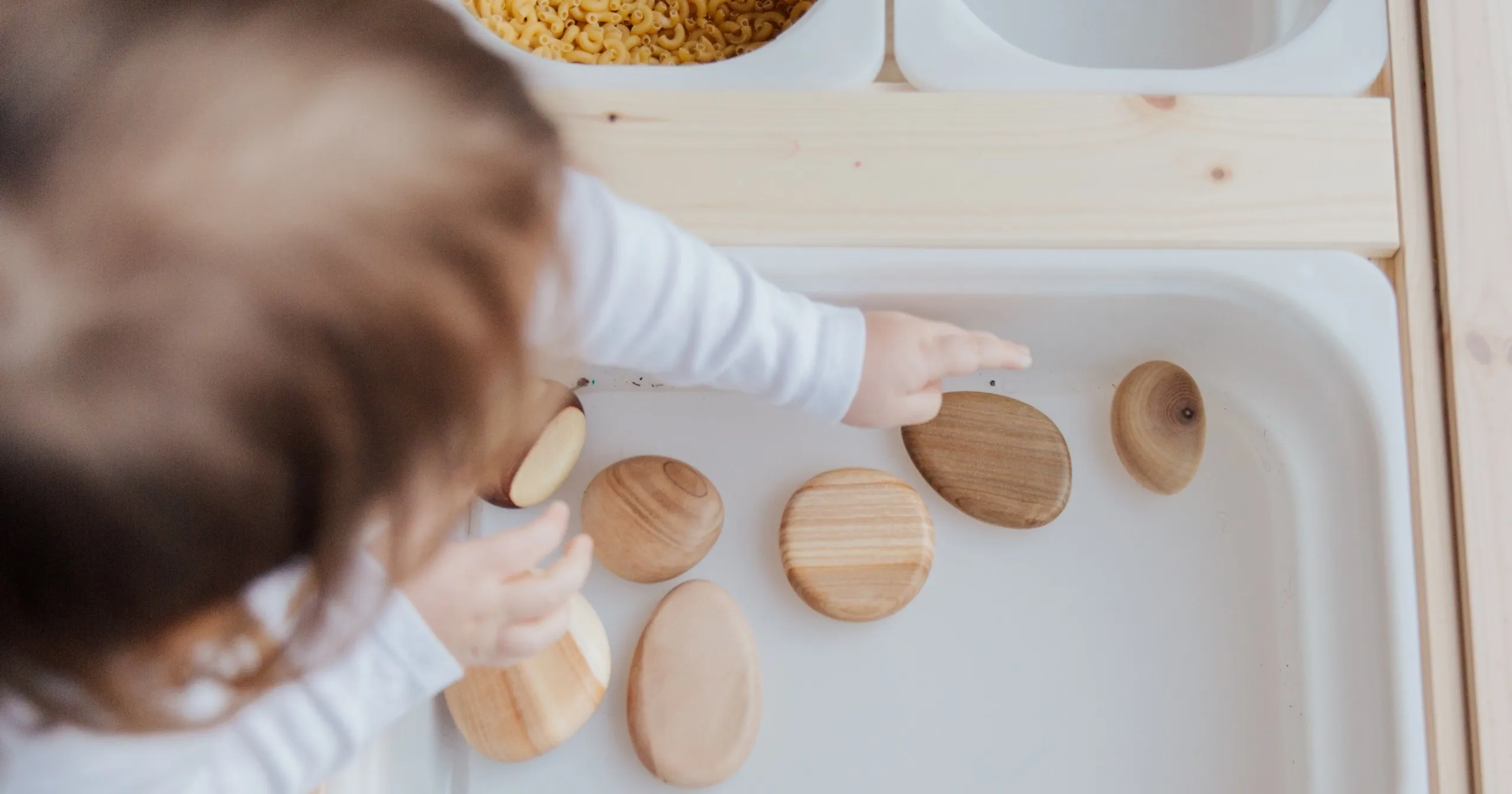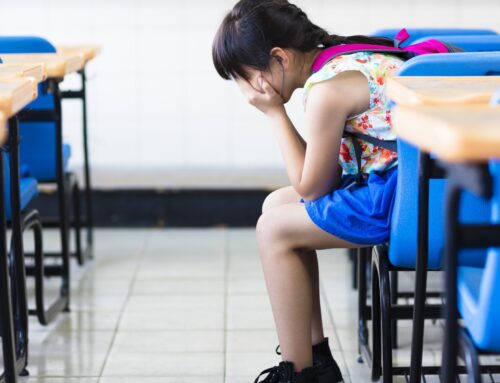
Formal education is a vast world of approaches and perspectives. As The Alternative Education Resource Organization points out, methods, theories, ideas, programs, and practical applications abound—all with their own unique pros and cons. Some of these methodologies are as old as the hills, while others are still in their proverbial infancy.
One such educational method is the Montessori model. Developed in the early 1900s, popularity for this method has ebbed and flowed throughout the years. Recently, however, the Montessori ideal has made a bit of a comeback.
Parents and academic professionals should be aware of Montessori education so they can make well-informed educational decisions for the children in their care. This article will examine the Montessori educational model, the program’s recent influx in popularity, and what this method has achieved so far.
The Montessori Educational Model
So, what exactly is Montessori education?
LearningTheories explains the Montessori model, “The Montessori Method is an approach to education which emphasizes individuality and independence in learning[1]. Children are seen as inherently curious and learning-driven. Thus, education is viewed as a process that should occur in harmony with the child’s individual developmental pace. It is a holistic approach emphasizing all aspects of development, rather than on attaining specific pieces of information.”
Origin
In 1897, Maria Montessori volunteered to join a research program through the University of Rome. As part of this research, she observed children confined in one of Rome’s mental asylums. Here, she noted an interesting problem. She felt that the children were not receiving enough environmental stimulation in their learning. This observation led her to develop what would later become known as her namesake educational model, the Montessori method. This educational approach focuses on a specifically prepared environment and students’ experimentation with and responses to materials and lessons.
Basic Principles
Montessori education is based on a psychological understanding of human development. Forbes offers an excellent explanation of what this model looks like: “In many ways, the Montessori method is the antithesis of how people traditionally think of school. For much of the day, students don’t sit at desks or tables. They aren’t expected to follow teachers’ instructions perfectly. And they aren’t constantly given instructions on what to do.”
Necessary Elements
It’s important to note that a range of practices exists under the “Montessori” name. The Association Montessori Internationale (AMI) and the American Montessori Society (AMS) cite a few essential elements for a proper Montessori education, as compiled by Wikipedia:
-
Mixed-age classrooms: classrooms for children ages 2 ½ to 6 years old are by far the most common, but 0–3, 6–9, 9–12, 12–15, and 15–18-year-old classrooms exist as well
-
Student choice of activity from within a prescribed range of options
-
Uninterrupted blocks of work time, ideally three hours long
-
A constructivist or “discovery” model, in which students learn concepts from working with materials rather than by direct instruction
-
Specialized educational materials often made out of natural, aesthetic materials such as wood rather than plastic
-
A thoughtfully prepared environment where materials are organized by subject area, accessible to children, and appropriately sized
-
Freedom, within limits
-
A trained teacher experienced in observing a child’s characteristics, tendencies, innate talents, and abilities
Quote taken from “Montessori education.”
Montessori education involves free activity within a prepared environment. Students enjoy an environment that has been carefully created and cultivated, with specific goals in mind. Basic human tendencies, the specific characteristics of children at different ages, and the individual personalities of each child are all key aspects taken into account.
The Montessori environment helps each child develop independence in all areas as their natural inclinations dictate. This environment cultivates and encourages each student’s innate psychological development.
Montessori Popularity
Montessori education has been—and continues to be—used all over the globe. Begun in Rome, the popularity of this innovative model has ebbed and flowed over the years. Nonetheless, globally, Montessori schools have remained intact in spite of the regional controversy.
The American Montessori Society offers a brief history of the Montessori educational movement, a useful tool when examining the popularity of the Montessori model. Dr. Maria Montessori opened the first school based on her theories in January of 1907. She called the new school the Casa dei Bambini, or “Children’s House.” The school proved to be a success, and by October of 1907, she was operating three separate schools utilizing her program. Her work became internationally known within a short time, and her ideas quickly spread to other continents.
Montessori Education in America
By 1911, her ideas had reached the United States and became a popular topic for educational publications. The movement enjoyed the support of prominent figures such as Thomas Edison and Alexander Graham Bell. By 1916, there were over 100 American Montessori schools in operation.
Unfortunately, these new ideas were not welcomed by the American educational establishment as a whole, and critics were outspoken in their skepticism. As a result, by 1920, the innovative concepts had lost much of their popularity. However, this was not the end of Montessori education in the United States.
A Return to Popularity
Whitby School examines the return of Montessori education to America: “Forty years after the Montessori method was forgotten in America, it was revived by parents who were passionate about finding a better way to educate their children … Over the next few decades, the number of Montessori schools in the U.S. soared as educators and parents learned how this unique teaching method could build children’s confidence, creativity, and love of learning.”
Montessori schools continue to grow in popularity today. Historically, American private schools have been the primary utilizers of the model, though the homeschool movement has also popularized the system. American Montessori schools have primarily catered to children from wealthy, cultured families. Striving to give their children the best education possible, these parents often openly embraced new and innovative educational ideas, expanding their children’s options.
“The last fifteen years have witnessed a surge of interest in Montessori education,” notes the National Center for Montessori in the Public Sector, “This interest is evident in a rise in research on Montessori, increased mainstream press, and the opening of new Montessori schools …”
Montessori Education in the Public Schools
The Montessori method was initially developed for lower-income children, however. Recently, American Montessori schools have seen a trend in returning to the model’s roots.
The National Center for Montessori in the Public Sector examines this trend: “Beginning with the introduction of charter schools in the early 1990s, along with the expansion of choice options in many urban districts, a growing community of parents and educators seeking alternatives to conventional public schooling continues to fuel exponential growth in the public Montessori sector.”
Forbes notes that the last 20 years have seen rapid growth in the number of public Montessori schools. Beginning with approximately 130 at the end of the 1980s, Montessori education in the public-school arena has grown to about 500 in 2015. As a result, the American Montessori model has begun to refocus on its origins – the education of low-income students.
Montessori Education: The Results
Proponents of Montessori schools note that they can offer many benefits to students, particularly younger students. The child-based, more free-style experience may offer an attractive option for parents and educators looking for more educational choices.
“Children attending a Montessori school will benefit from a hands-on approach to learning, getting to develop their creativity, critical thinking, and problem-solving skills,” explains Tech Will Save Us. “The open-space and community feel of Montessori classrooms along with grouping children of different ages together are intended to foster peer-to-peer learning which can naturally lead to growth.”
They conclude with this promising note, “The Montessori approach which fosters independence and freedom of choice also cultivates children’s curiosity and fosters a love of learning that will stay with them for the rest of their lives.”
Benefits
Amity Montessori observes that the Montessori educational model offers several unique benefits. For instance, when utilizing this learning style, each child is valued as a unique individual. Children learn in different ways, and the Montessori method recognizes and accommodates this concept. The classroom design, materials, and daily routines cultivate order, coordination, concentration, and independence.
In addition, due to the unique structure of the classroom setting, a Montessori model tends to re-create a family feel with older students mentoring. Meanwhile, younger children enjoy the support and confidence that is cultivated in this environment.
The online preschool program Amity Montessori sums it up like this: “Given the freedom and support to question, to probe deeply, and to make connections, Montessori students become confident, enthusiastic, self-directed learners. They are able to think critically, work collaboratively, and act boldly—a skill set for the 21st century.”
Mixed Outcomes
Throughout its century-long history, the Montessori educational model has been met with both open arms and derision. Proponents of the system hail its virtues while skeptics eye the potential cons with caution.
The Public School Review notes that many parents and educators who support Montessori education believe in the model’s alternative academic process. In their eyes, this model promotes individuality and allows the students to express themselves and their academic interests at their unique speed.
U.S. News offers some insights into Montessori schools by examining a fascinating study conducted on their educational outcomes:
“Recently, two peer-reviewed studies were published using this methodology. The results are mixed: promising for preschool, not so promising for older students in high school,” the news site states.
Continuing their exploration of the topic, U.S. News explains, “In the October 2017 preschool study, published in Frontiers in Psychology, six researchers looked at two Montessori schools in Hartford, Connecticut … The researchers tested approximately 140 students at the start of the preschool and found that both the Montessori and non-Montessori kids began at age three with similar achievement scores.”
The results of this study?
- Over the following three years, the 70 Montessori students excelled in math and literacy compared to their non-Montessori counterparts
- The Montessori students ended their kindergarten experience with significantly-higher achievement than the non-Montessori students
- Softer skills, such as group problem-solving, executive function, and creativity, were seemingly unaffected by the study parameters. The two groups did comparatively similarly in these areas, with pre-study differences remaining statistically the same
The study results seemed to indicate that a Montessori education may offer statistically-significant benefits for younger students. Older students appeared to be unaffected by the methodology.
However, another study conducted in Milwaukee found that older students may benefit from having had Montessori education in their younger years. In essence, the study concluded that attending a Montessori program earlier on predicted significantly-higher mathematics and science standardized test scores in high school. This study supports the hypothesis that a Montessori education can have a long-term positive impact on a student.
For further reading, the National Center for Montessori in the Public Sector offers a comprehensive list of studies and outcomes focused on Montessori education.
Objections
Along with questions about the method’s efficacy for all age groups, critics of the Montessori model often cite the “teacher difficulty.” The Montessori model requires a significant deviation from conventional teaching methods. This, in turn, results in new and often extensive training for Montessori teachers in order for the model to succeed.
Edutopia examines this objection: “Extensive training—comparable to graduate school coursework—is necessary as the Montessori curriculum challenges educators to rethink fundamental classroom dynamics, right down to the roles of teacher and student. Instead of delivering whole-class lessons, teachers prepare individualized work plans for every child every week and circulate around the room during class time to help and observe students individually.”
Furthermore, critics question the promising results of Montessori schools, noting the extra and in-depth training and certification for the teachers may influence the results more than the actual learning method.
Conclusion
Montessori schools have a history over a century long. Regardless of objections and naysayers, the method has remained a valid educational option for many. The current upward trend of the Montessori model in American schools offers a new opportunity for experimentation and study.
With the growth within the American public school sector and the private school arena, new data and further insights are coming to light. As a result, both parents and education professionals have a promising hope to examine and use the Montessori educational model in a new context and through a fresh lens.





[…] doesn’t necessarily have to include academic instruction. Educational methodologies such as Montessori and Waldorf use this knowledge as their guiding […]